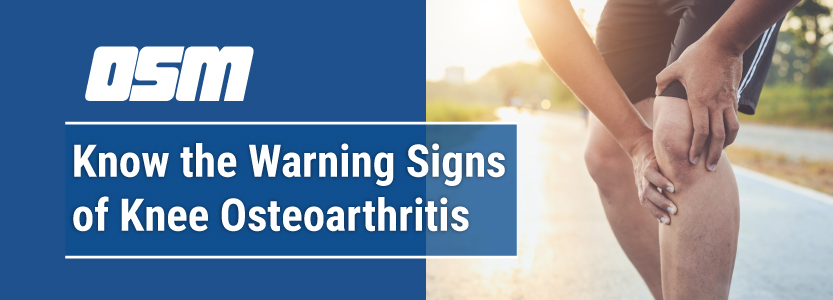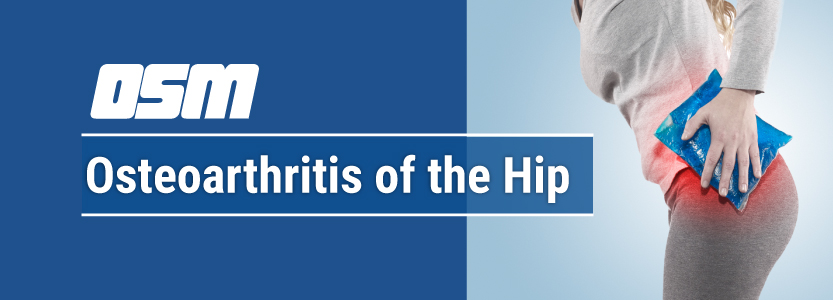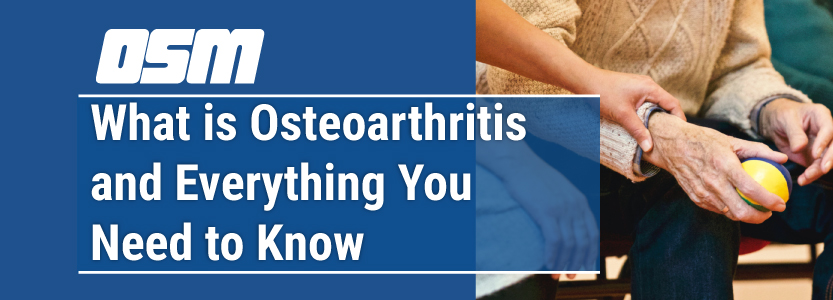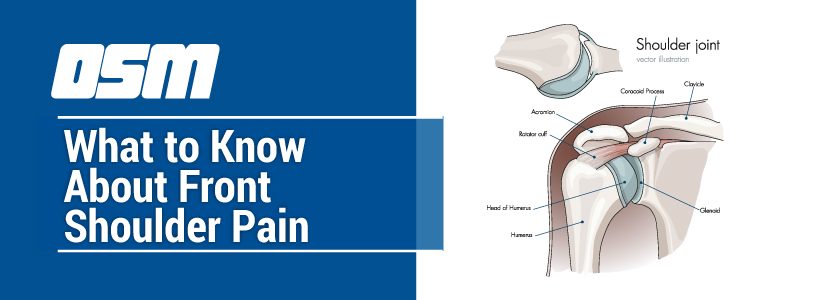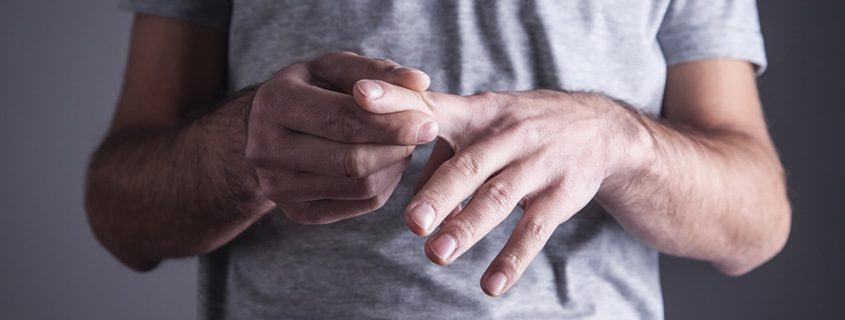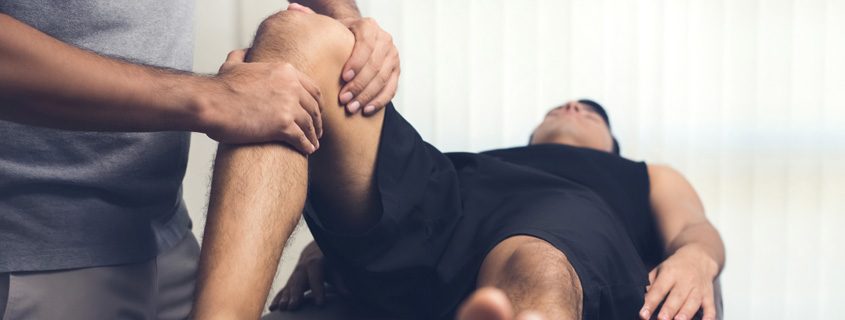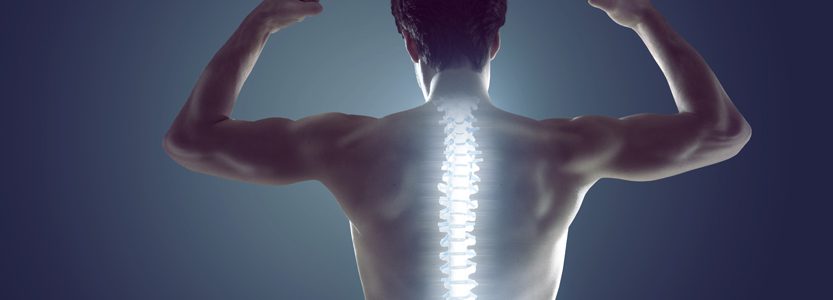Know the Warning Signs of Knee Osteoarthritis
Article featured on MedicalNewsToday
Osteoarthritis of the knee happens when the cartilage that cushions the bones in the knee starts to erode. The bones begin to rub against each other, resulting in damage, swelling, and pain.
Cartilage is a smooth but tough tissue that stops the bones from rubbing together and prevents damage. It allows the bones to move pass smoothly over each other. As people get older, the weight they carry can cause the cartilage to wear away.
As the cartilage breaks down and the bones rub together, osteoarthritis (OA) can result.
OA is the most common type of arthritis. The symptoms include swelling, pain, and stiffness. When it affects the knee, it can be difficult for a person to exercise, to climb stairs, or even to walk.
Early signs and symptoms
OA usually affects people who are over 50 years of age, but it can happen earlier, too.
Symptoms that can appear at the early stages of knee OA are:
- pain, especially on bending and straightening the knee and with weight bearing
- swelling, caused by a buildup of fluid in the joint, or by bony growths called osteophytes that form as the cartilage breaks down
- warmth in the skin over the knee, especially at the end of the day
- tenderness when pressing down on the knee
- stiffness when moving the joint, especially first thing in the morning or after a period of inactivity or walking
- creaking or cracking on bending, known as crepitus
Activity can make symptoms worse, leading to pain at the end of the day, especially after a long time of standing or walking.
If the knee is red, the person has a fever, or both symptoms occur, the problem is probably not OA.
Treatment
Treatment of OA depends on how severe the symptoms are.
Home treatment
Some remedies and over-the-counter treatments for OA of the knee can be used at home and are readily available from the pharmacy.
These include:
- Applying heat or cold: Heat relieves stiffness, and cold can ease pain and swelling. The heating pad or ice pack should be covered with a towel so as not to burn the skin.
- Using an assistive device: A cane or walker can help take some of the weight off of the knees. Holding the cane in the opposite hand to the painful knee is most effective.
- Pain relief medications: These are available over the counter, but people should use them with caution as they can cause side effects.
Medical treatment
If home or over-the-counter remedies do not help, the person should see a doctor.
They may prescribe one of the following:
- steroid injections in the knee joint to reduce inflammation
- physical therapy, with exercises to improve flexibility and range of motion in the joint
If these solutions do not work and damage is severe, the physician may recommend surgery to replace the joint.
When to see a doctor
For some people, pain and other symptoms are severe enough to interfere with daily life, and over-the-counter medications do not help.
The next step is to consult a general physician, who may refer the person to a rheumatologist or orthopedic surgeon.
To find out whether a patient has OA, the doctor may ask:
- When and how did the pain start?
- Where does it hurt?
- Is there any stiffness, creaking, warmth, or swelling?
- What makes it better? What makes it worse?
- How have you treated it? Did home treatments work?
- How have the symptoms affected daily activities?
The doctor will examine the knees, moving them forward and back to note the range of motion and to find out which movements cause pain.
They will look for areas of tenderness, check the warmth and see if any swelling is present. The physician will also check the ligaments for stability.
Diagnosis
A number of tests can help to diagnose OA:
- Joint aspiration: The doctor uses a needle to draw a sample of fluid from the joint. They send the fluid to a laboratory for tests to check for signs of other joint problems, such as gout or infection.
- Magnetic resonance imaging (MRI): This can provide detailed images of the knees, which may show fluid buildup in the thigh or knee bones.
- X-rays: These can reveal damage to the knee joints in the later stages but may not detect changes in the early stages.
Lifestyle changes
Some lifestyle changes can relieve the pain and stiffness that occurs with knee arthritis:
Losing weight can relieve pain and prevent further joint damage.
For people with OA of the knee and either overweight or obesity, current guidelinesTrusted Source strongly recommend weight loss. A doctor can advise on how much weight to lose.
Exercise, and especially low-impact activities such as walking, riding a recumbent bicycle, or swimming, can relieve arthritis pain.
Swimming is ideal because the buoyancy of the water takes pressure off the joints, while the warmth soothes them.
Exercise increases motion and flexibility and strengthens the muscles that support the joints. It also helps people to maintain a healthy weight.
Takeaway
OA is a common but painful condition that affects many people as they age. Pain, stiffness, swelling, warmth, or cracking in the joints may be early signs that it is time to seek medical help.
The Orthopedic & Sports Medicine Center of Oregon is an award-winning, board-certified orthopedic group located in downtown Portland Oregon. We utilize both surgical and nonsurgical means to treat musculoskeletal trauma, spine diseases, foot and ankle conditions, sports injuries, degenerative diseases, infections, tumors and congenital disorders.
Our mission is to return our patients back to pain-free mobility and full strength as quickly and painlessly as possible using both surgical and non-surgical orthopedic procedures.
Our expert physicians provide leading-edge, comprehensive care in the diagnosis and treatment of orthopedic conditions, including total joint replacement and sports medicine. We apply the latest state-of-the-art techniques in order to return our patients to their active lifestyle.
If you’re looking for compassionate, expert orthopedic and podiatric surgeons in Portland Oregon, contact OSM today.
Phone:
Address
1515 NW 18th Ave, 3rd Floor
Portland, OR 97209
Hours
Monday–Friday
8:00am – 4:30pm

